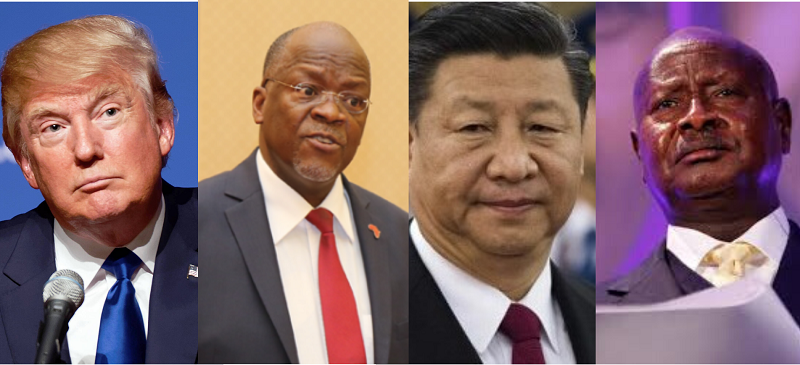“Inaction accelerates the climate change crisis”
June 6th, 2013 There were high hopes for the climate change conference in Doha, writes Naman Sanghvi, 23, a Correspondent from India. But after seeing progress at Durban, some participants appear to have lost commitment to the cause.
There were high hopes for the climate change conference in Doha, writes Naman Sanghvi, 23, a Correspondent from India. But after seeing progress at Durban, some participants appear to have lost commitment to the cause.
Given the progress made at the Durban COP 17 climate change conference – which was also considered by many as a turning point in climate negotiations – there were high hopes from COP18, Doha.
But all in all, Doha was considered by most observers as a failure.
The only substantial positive outcome was the extension of the Kyoto Protocol. Inaction and lack of cooperation by developed countries like the USA, Russia, Japan, Poland and New Zealand was severely criticized. Countries were accused of not demonstrating leadership or a commitment to reduce emissions.
These broad agreements emerged:
- A new global ‘Climate Deal’ will be applicable to all countries from 2020, to be negotiated and adopted by 2015 (till now, all countries were not bound by one common agreement)
- Over various meetings in 2013, countries will make representations and positions on this ‘proposed new deal’, and discuss and negotiate towards a common agreement.
- Countries have still not agreed on the concept of over concept of ‘Equity’ and ‘Common but differentiated responsibilities’[i], and along with submissions on the new agreement, will be required to specifically provide structure on these principles in their submissions.
- The Kyoto Protocol will now be extended for another eight years, starting from January 1, 2013. It is the only binding agreement, under which developed countries have taken emission reduction targets and was scheduled to expire in 2012.
- This extension was seamless and was a significant achievement, as it ensured that a binding agreement to cut emissions is in effect till 2020
- Despite strong pressure from developing and underdeveloped countries, NGO’s, development organizations, civil and activist groups, developed countries did not take on ‘increased ambitious’ emission reduction targets, which inspired severe criticism. The only consolation was that these countries did agree to ‘re-look’ at their emission reduction targets by 2014, with the ‘perspective and view’ of increasing their commitment levels
- Countries like Russia, Canada, Japan, USA (which never signed the Kyoto Protocol) did not sign KP2. Thus though the Kyoto Protocol has been extended, some major emitters have still not agreed to take binding emission reduction targets. This will definitely complicate the negotiations of the ‘new 2015 Climate Deal.
- One of the most critical issues under discussion at COP was ‘Whether surplus AAU’s (Assigned Amount Units) from KP1 will be allowed to be carried over to the 2nd period’. Each country with emission reduction targets under KP1 was given certain ‘emission allowances or permits’ along with reduction targets. Countries like Russia, Ukraine and Poland that had these targets and allowances suddenly found their emissions to be considerably lower because of the abrupt fall in economic activity upon the break-up of the Soviet Union. Other countries thus contested that the reduction in emissions cannot necessarily be attributable to ‘climate related action’ by these countries, and hence the excess ‘unfair’ allowances that they received should not be allowed to be carried over in the second commitment period, to offset their targets. These AAU’s further are tradable commodities and can be sold / bought, thus allowing these very same countries to make a lot of money over actions that they never took.
This issue was nearly a deal breaker, and in the end the decision was to allow the surplus AAU’s to carry over. Though there were rules and limits set on the quantity and use of these AAU’s, civil groups voiced their disappointment on this decision and its implications emphatically. Some consolation can be taken from the fact that many countries have come forward and explicitly stated that they will not buy these ‘carry forwarded allowances’.
- Progress on long term climate finance was considered disappointing and ‘without ambition’. Negotiations on Climate Finance have been deferred to the next COP.
- Climate Finance refers to financial support directed to developing and underdeveloped countries for adaptation and mitigation (negate the rate and impact of climate change) of climate change. Developed countries, though having already committed $100 billion annually from 2020 onwards, did not provide clear targets and a plan for 2013-2020.
- Developed countries agreed to provide a total of $30 billion or more towards climate finance from 2013 – 2015, though developing countries and Greenpeace asked for $60 billion[ii].
- Comprehensive guidelines on MRV systems – measuring, reporting and verification – will be worked upon up until the next COP. All countries accepted a need for a detailed structure and transparent reporting of finance and emission reductions, as it will also help track the progress of countries better.
- Outside mitigation and adaptation, economic exposure to loss and damage because of disasters is unlimited. Developed countries only agreed to establish by COP 19- some mechanisms and arrangements to help countries deal with losses from climate change.
There is no doubt that there will be increased pressure in the next COP. To quote Greenpeace[iii]: “The international process limps on, while the crisis accelerates “.
photo credit: Ennor via photopin cc
…………………………………………………………………………………………………………………
About me: I am an Engineering graduate passionate about renewable energy, and am currently working in Renewable energy sector (Business Development for a IPP)
In college I dabbled in various projects ranging from: growing plants with an irrigation system I designed, designing and racing an All-Terrain Vehicle, and developing a carbon footprint calculator.
My interests lie in the business side of renewable energy and the intersection of youth and social innovation. I am currently based out of Mumbai, and can be reached at sanghvi.naman1@gmail.com
…………………………………………………………………………………………………………………
Opinions expressed in this article are those of the author and do not necessarily represent the views of the Commonwealth Youth Programme. Articles are published in a spirit of dialogue, respect and understanding. If you disagree, why not submit a response?
To learn more about becoming a Commonwealth Correspondent please visit: http://www.yourcommonwealth.org/submit-articles/commonwealthcorrespondents/
…………………………………………………………………………………………………………………




